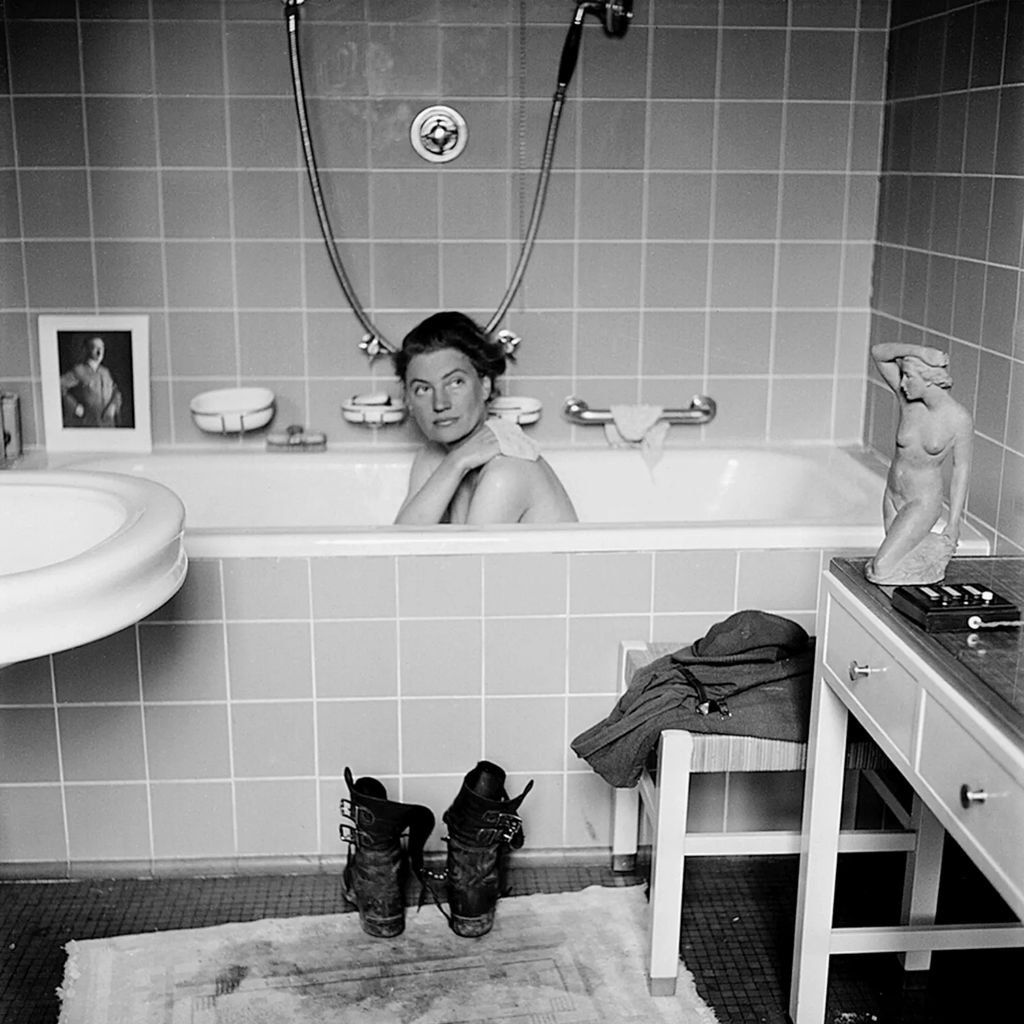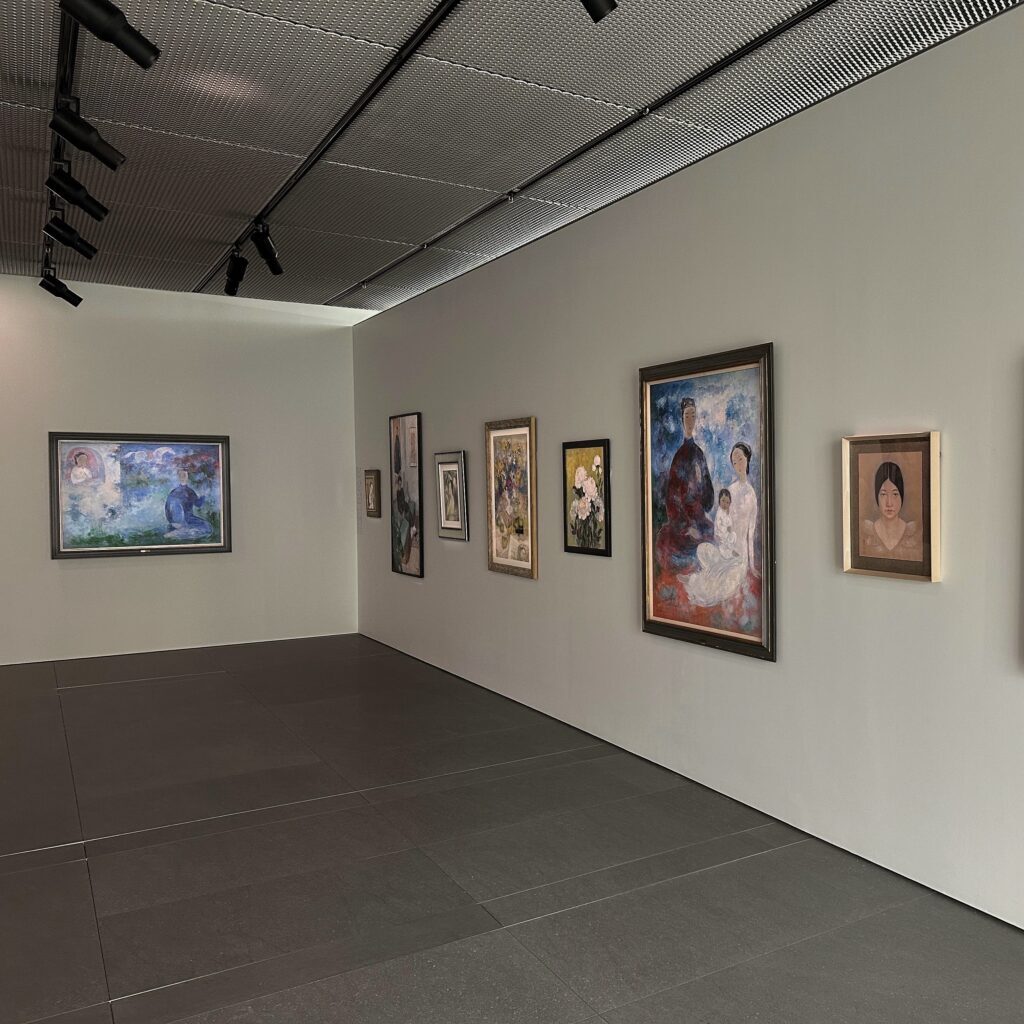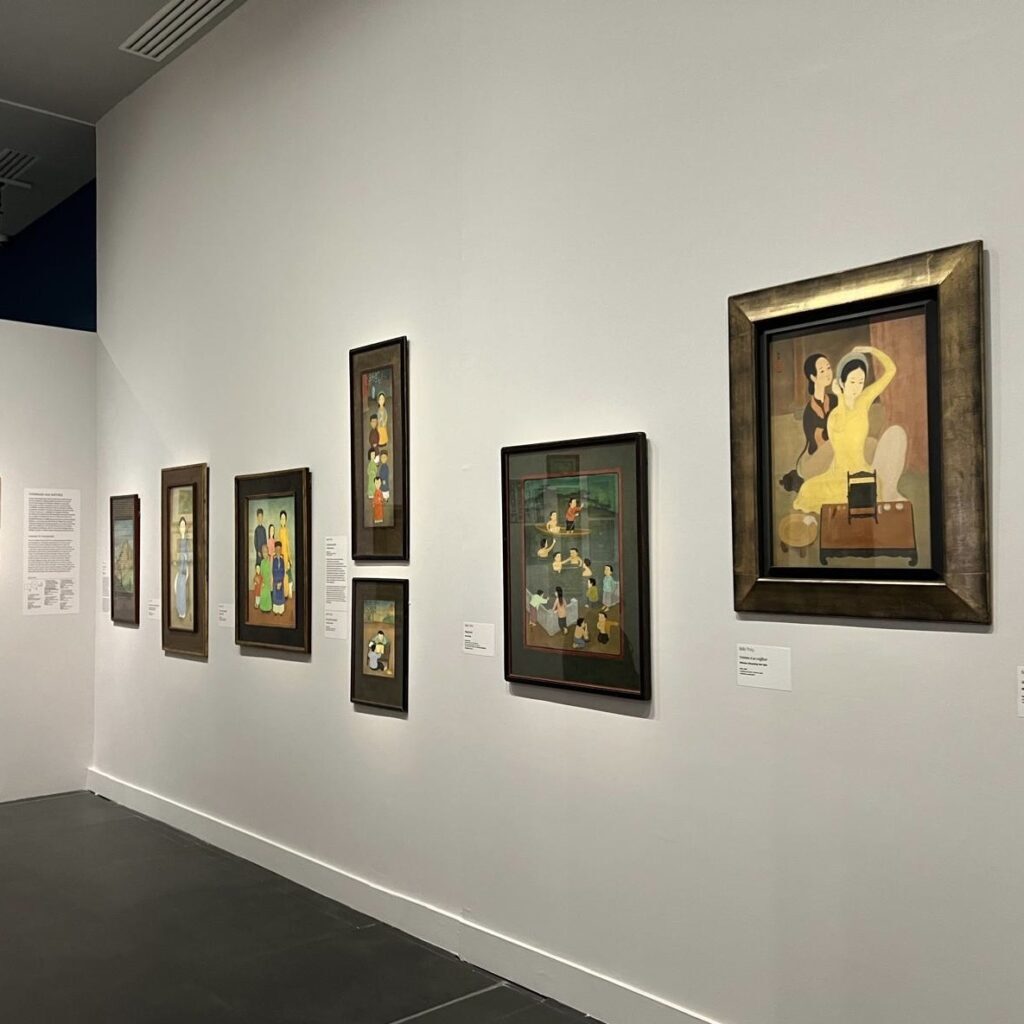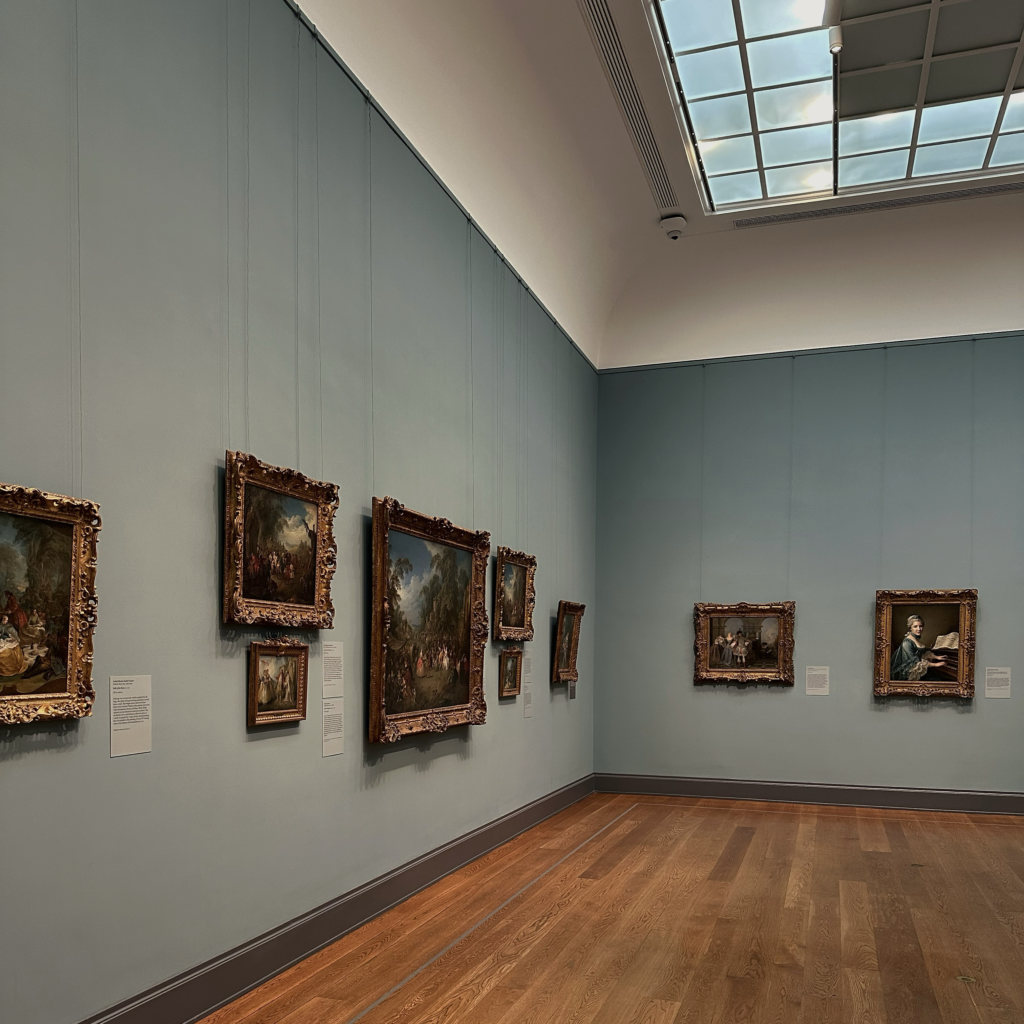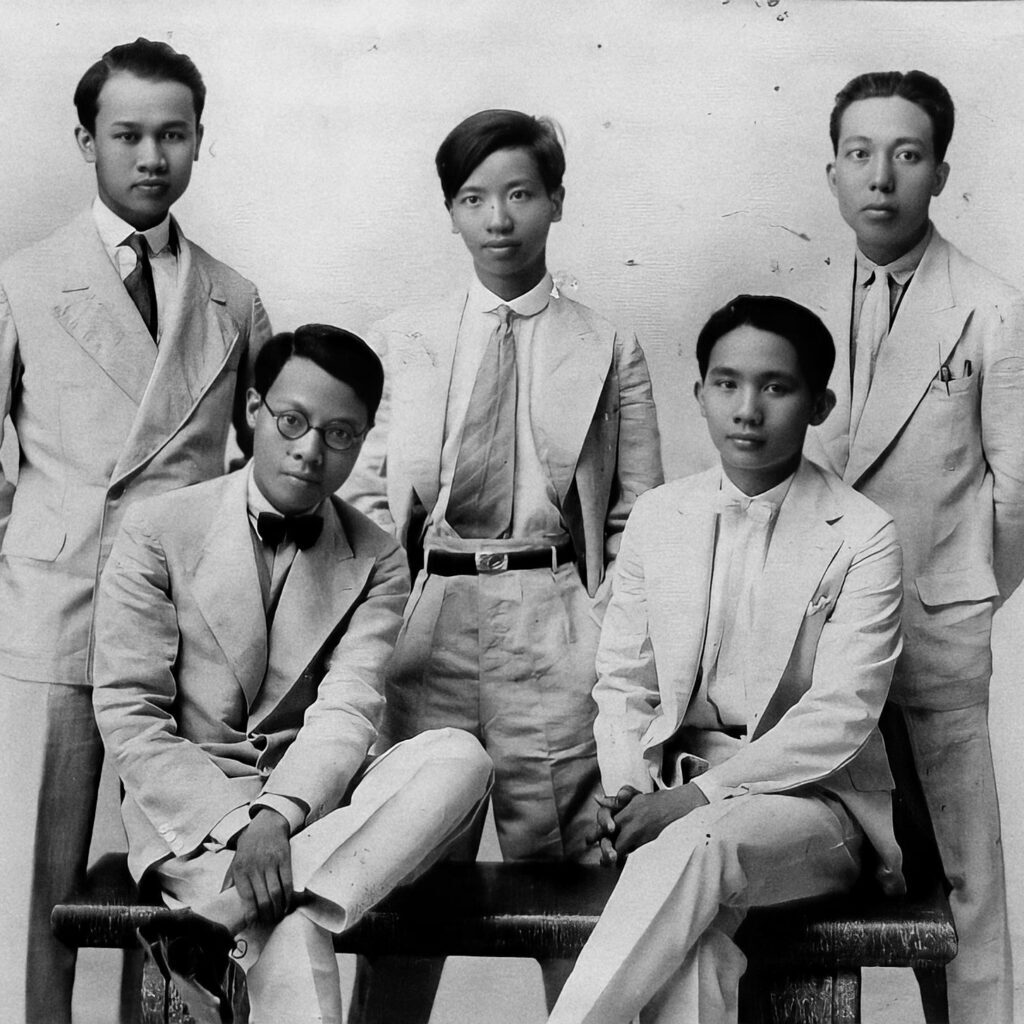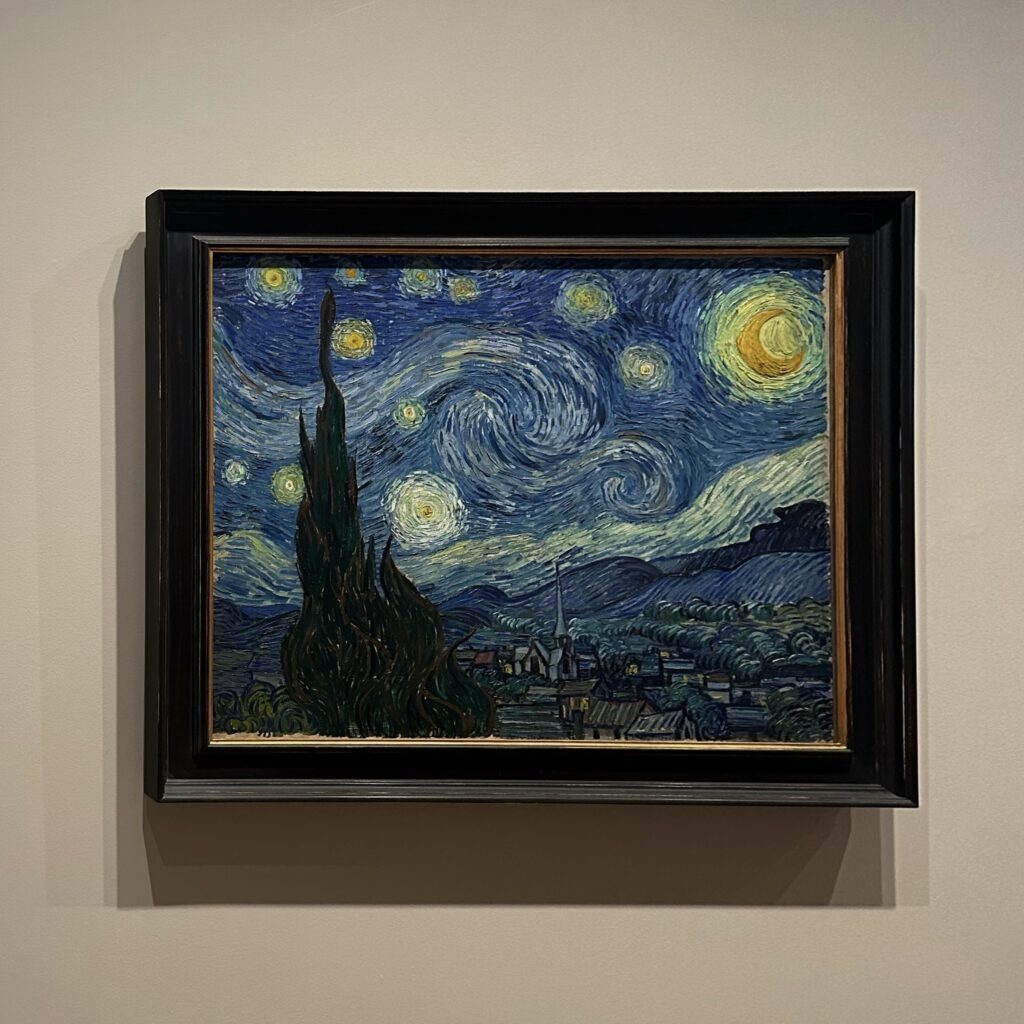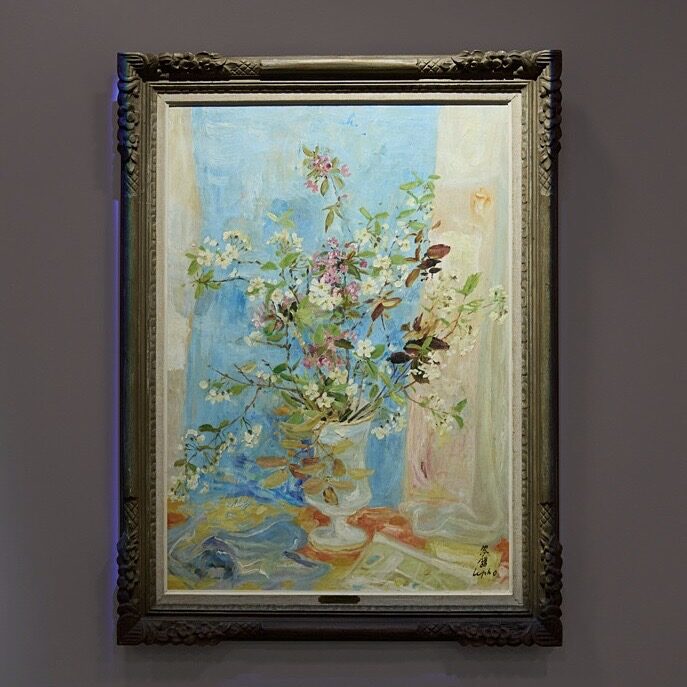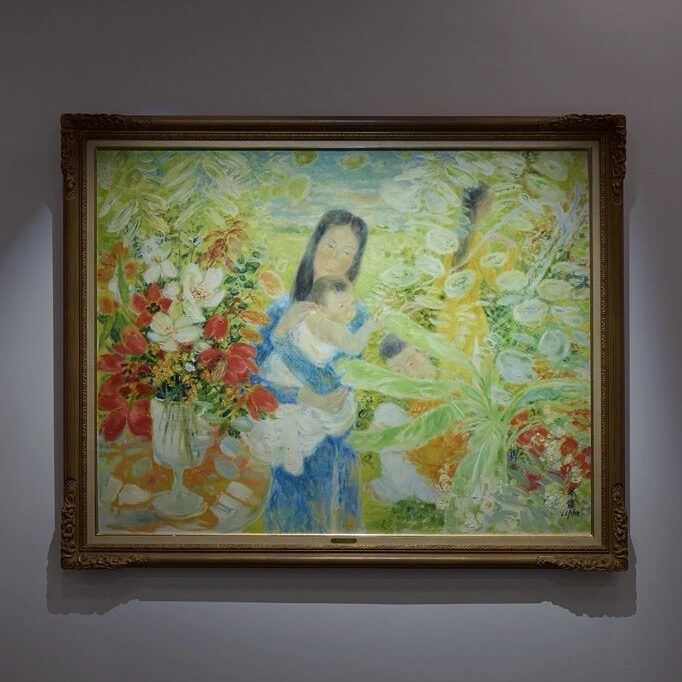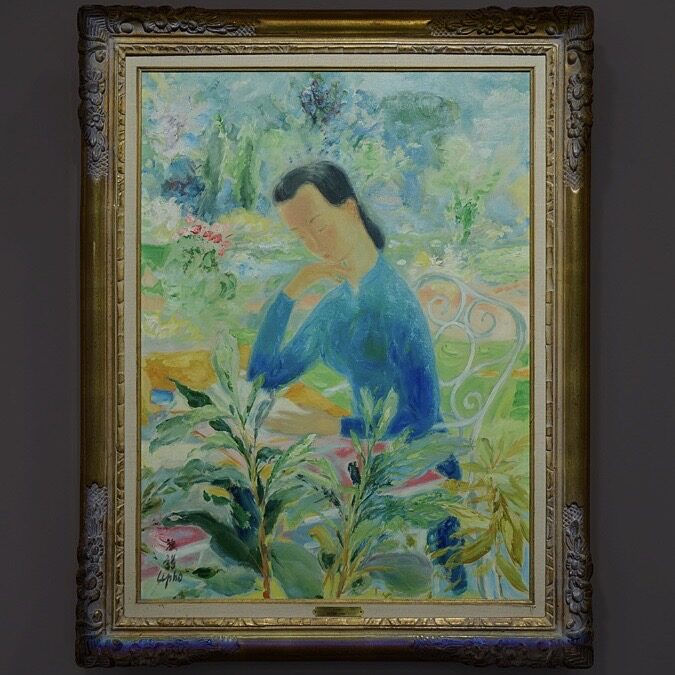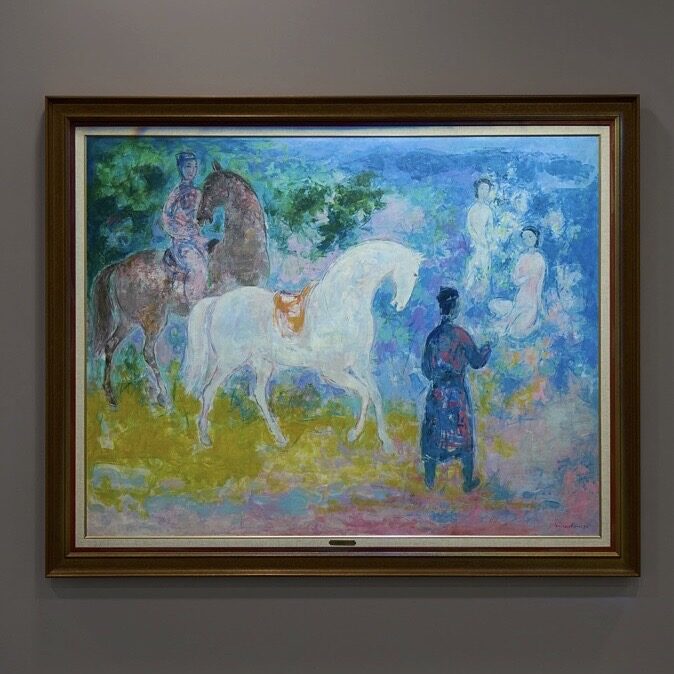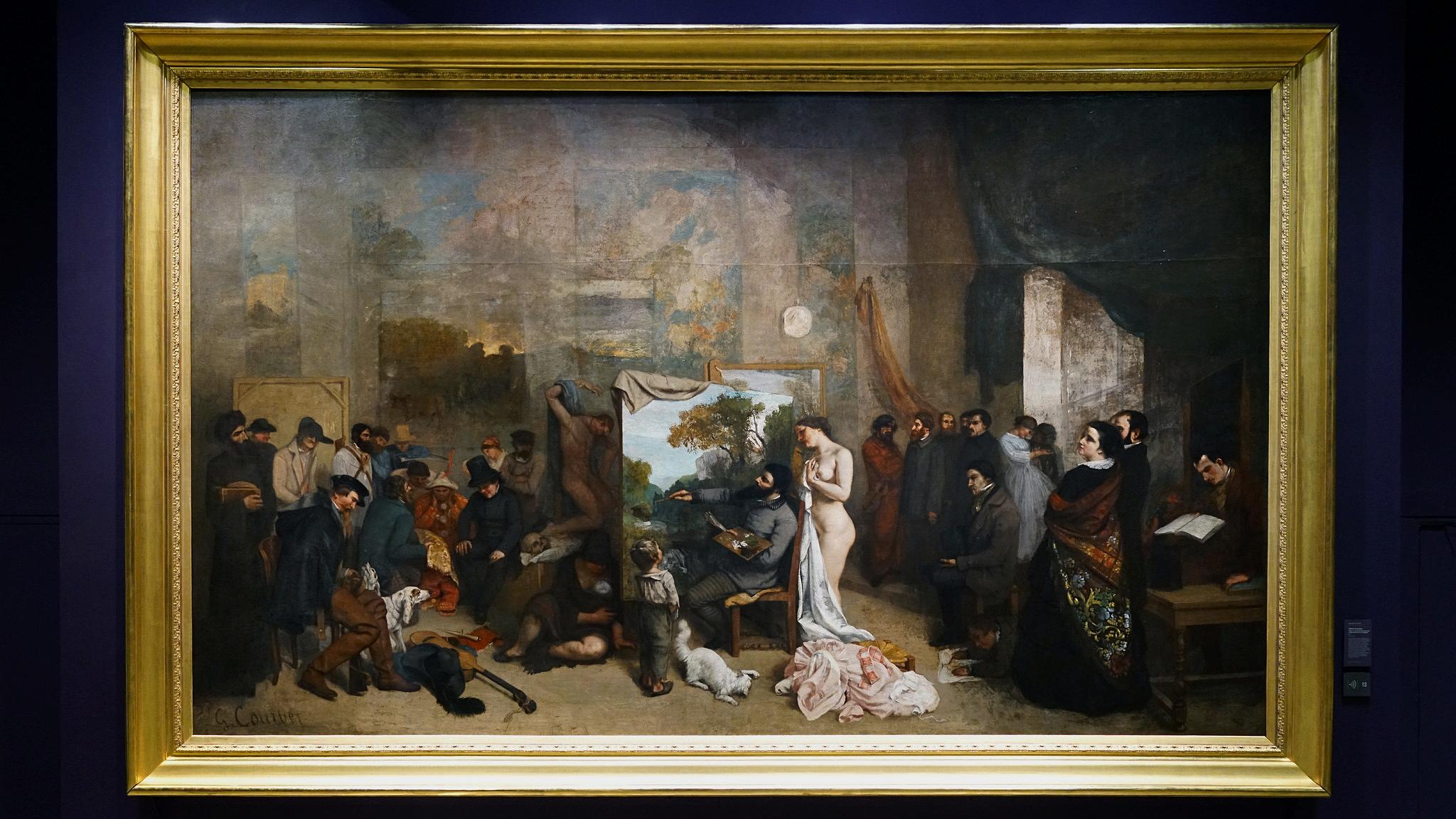
Gustave Courbet (France, 1819-1877)
L'Atelier du peintre (The Painter's Studio)
oil on canvas
361 cm × 598 cm (142 in × 235 in)
painted in 1855
Collection of Musée d'Orsay in Paris, France
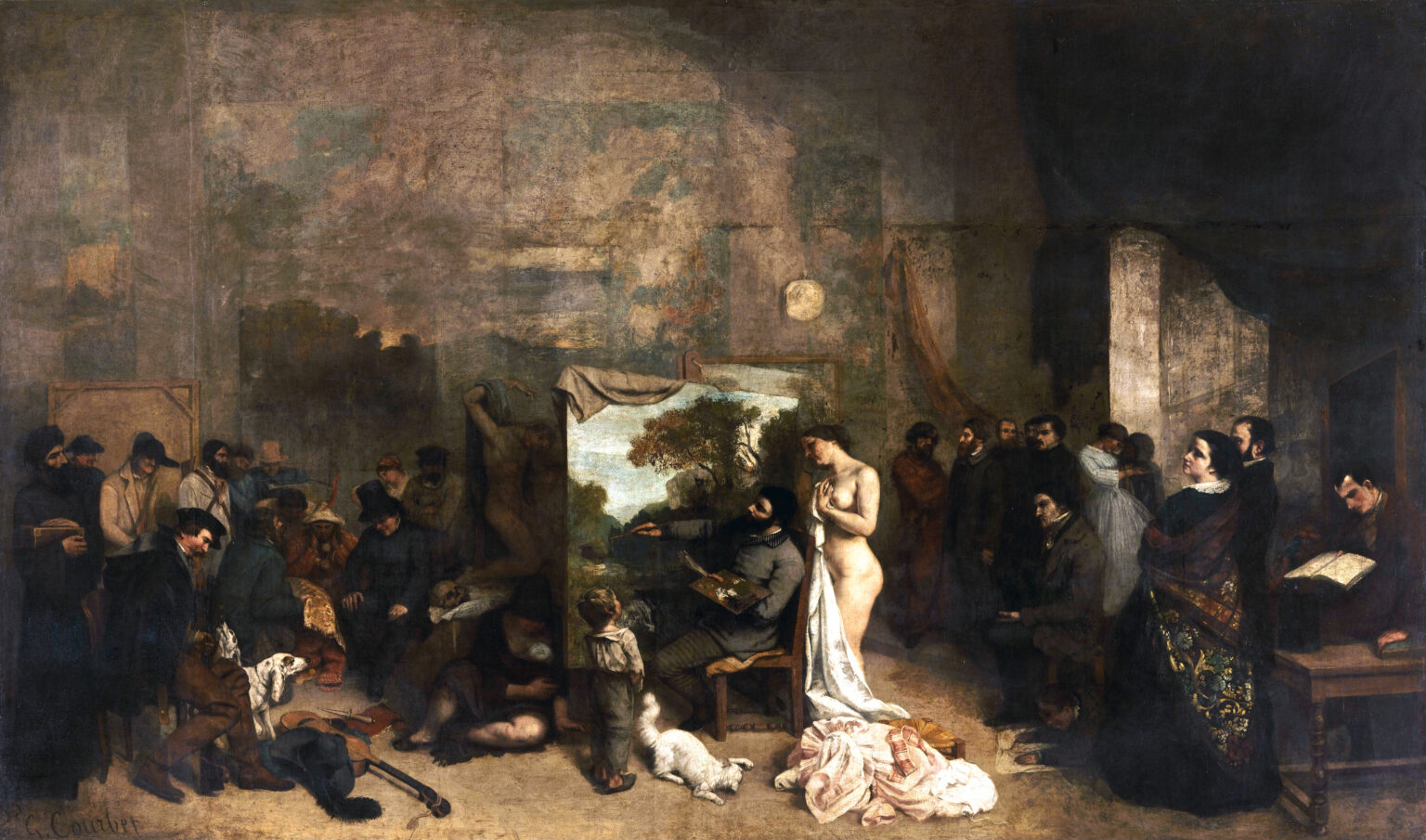
In this painting of gigantic dimensions (3.61 by 5.98 meters), the realist painter provokes his contemporaries by adopting the format of a history painting, the genre par excellence, to paint a much lesser-rated genre scene: an artist in his studio.
But it's true that there are a lot of people in this painting! Highlighted in the centre, painting next to a nude model, Courbet represents himself in one of his customary self-portraits. As he himself explains, on his right are "all the shareholders, i.e., friends, workers, art lovers". On the left is "the other world of trivial life, the people, misery, poverty, wealth, the exploited, the exploiters, the people who make their living from death": a priest, a hunter, a mortician...whom he has the humour to portray in the guise of personalities of the time (Garibaldi, the journalist Emile de Girardin or even Napoleon III)!
But in this painting, the most exciting thing isn't who you see. Rather, it's who we don't see anymore.
On the right, reading, is Charles Baudelaire, Courbet's poet friend. Look closely to his left, between him and the door, appears a ghostly figure. It's Jeanne Duval, a mulatto actress and Baudelaire's muse, nicknamed "La Vénus Noire" ("The Black Venus"), who inspired his most beautiful poems about exoticism, sensuality and... the cruelty of women.
This silhouette of Jeanne, who seems to want to emerge from the shadows, is what we call repentance in painting: Gustave Courbet painted it, then erased it. It was probably Baudelaire himself who asked him to do it, following one of his many arguments with his mistress.
Could the ups and downs of love affairs be changing the course of painting history?
Yes, and Gustave Courbet once erased a former lover from one of his paintings. "Wounded Man" (another self-portrait), which shows a man lying down, a spot of blood on his heart and a sword at his side, was originally... a man asleep in a tender siesta, a woman on his shoulder... It was his partner, Virginie Binet, but when she left him, he removed her from the picture, symbolically expressing all the suffering she had inflicted on him.

